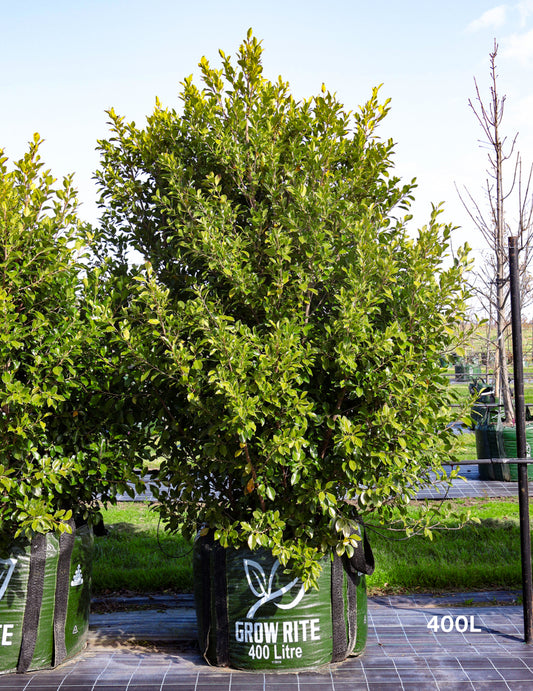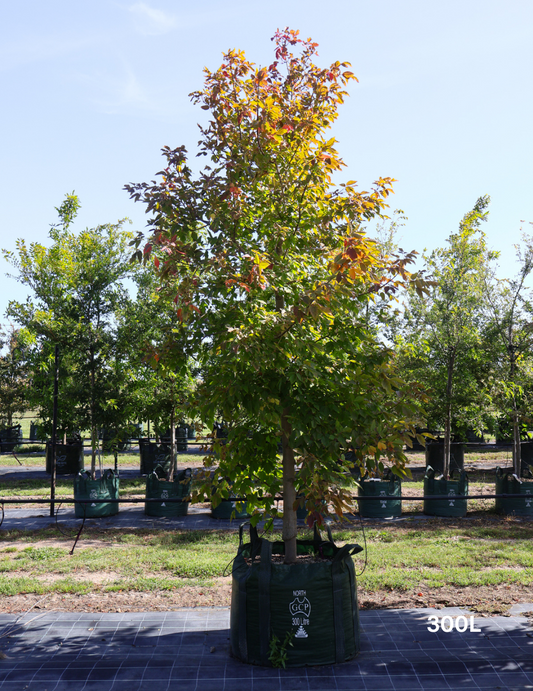Creating a garden that enhances the beauty of your property and supports the environment is a goal worth pursuing. Native trees are an excellent choice for achieving this balance. This article explores the benefits of incorporating native trees into your landscape, focusing on species such as Acacia Implexa, Eucalyptus Caesia, and Weeping Lilly Pilly (Waterhousia floribunda). These trees are stunning additions to any garden, support local wildlife, and contribute to the environment's health.
Why Choose Native Trees for Your Landscape?
Native trees have evolved to thrive in specific regions for thousands of years. They are adapted to local soil, climate, and wildlife, making them resilient and low-maintenance choices for your garden. But the benefits extend far beyond practicality:
- Environmental Harmony: Native trees work with the local ecosystem, promoting biodiversity by providing food and shelter for native birds, insects, and animals.
- Water Efficiency: These trees are well-suited to the local climate and often require less water than non-native species. This is especially important in regions where water conservation is critical.
- Soil Health: Native trees contribute to soil health by supporting a natural balance of nutrients and microorganisms, reducing the need for chemical fertilizers.
Acacia Implexa - The Lightwood Tree
Acacia Implexa, commonly known as Lightwood, is a versatile and hardy tree well-suited to various garden settings. This native Australian tree is known for its fast growth, resilience, and ability to thrive in poor soils.
Key Facts:
- Mature Height: 7-15 meters
- Mature Width: 3-6 meters
- Best Uses: Screening tree, shade tree, windbreak
- Leaf Appearance: Long, narrow, and slightly curved leaves with a light green hue
- Rate of Growth: Fast
- Tolerates: Poor soils, drought conditions
Why Acacia Implexa is Perfect for Your Garden
Acacia Implexa is a standout choice for those looking to add a resilient and attractive tree to their landscape. Its fast growth makes it an ideal screening tree, providing privacy and shelter in a relatively short period. The tree's light green foliage adds a soft texture to the garden, creating a soothing and welcoming environment.
Additionally, Acacia Implexa plays a vital role in supporting local wildlife. The tree's nectar-rich flowers attract native birds and insects, contributing to your garden's biodiversity. Its adaptability to various soil types and resistance to drought make it a low-maintenance option, perfect for busy homeowners who desire a lush garden without needing constant care.
Eucalyptus Caesia - The Silver Princess
Eucalyptus Caesia, known as the Silver Princess, is a striking tree with a graceful weeping habit and beautiful silvery-blue foliage. This tree is renowned for its ornamental qualities, making it popular for feature planting in high-end gardens.
Key Facts:
- Mature Height: 6-10 meters
- Mature Width: 3-5 meters
- Best Uses: Feature tree, ornamental tree, focal point in garden design
- Leaf Appearance: Silvery-blue, lance-shaped leaves
- Rate of Growth: Moderate
- Tolerates: Drought, light frost
Why Eucalyptus Caesia is Perfect for Your Garden
The Eucalyptus Caesia is a true showstopper with its striking appearance and ornamental qualities. This tree's silvery-blue foliage contrasts beautifully with the garden's greenery, creating a vibrant and eye-catching display. The Silver Princess is particularly suited as a feature tree, drawing attention to key areas of your landscape design.
Beyond its aesthetic appeal, Eucalyptus Caesia also supports local wildlife. Its flowers are a rich nectar source for birds and insects, encouraging a thriving, buzzing environment. The tree's moderate growth rate and tolerance to drought and light frost make it a robust choice for various Australian climates. If you want to add a touch of elegance to your garden while supporting the local ecosystem, Eucalyptus Caesia is an excellent choice.
Weeping Lilly Pilly (Waterhousia floribunda)
The Weeping Lilly Pilly is a lush, evergreen tree that adds a touch of elegance to any landscape. Its weeping branches and dense foliage create a soft, cascading effect visually appealing and functional as a screening or privacy tree.
Key Facts:
- Mature Height: 8-15 meters
- Mature Width: 5-8 meters
- Best Uses: Privacy screening, windbreak, ornamental tree
- Leaf Appearance: Glossy, dark green leaves with a dense growth habit
- Rate of Growth: Fast
- Tolerates: Moisture-rich soils, occasional drought
Why Weeping Lilly Pilly is Perfect for Your Garden
The Weeping Lilly Pilly is superb for creating natural privacy in your garden. Its dense foliage forms a natural barrier that shields your property from prying eyes while adding beauty and tranquility to your outdoor space. The tree's cascading branches create a serene, flowing aesthetic that complements contemporary and traditional garden designs.
In addition to its visual appeal, the Weeping Lilly Pilly is a magnet for wildlife. The tree produces small, white flowers that attract bees and other pollinators, while its dense foliage provides shelter for birds and small mammals. This makes the Weeping Lilly Pilly a beautiful addition to your garden and vital in supporting local biodiversity.
Environmental Benefits of Native Trees
Incorporating native trees like Acacia Implexa, Eucalyptus Caesia, and Weeping Lilly Pilly into your landscape offers various environmental benefits beyond your garden. These trees are crucial in preserving the local ecosystem, promoting biodiversity, and contributing to the environment's health.
- Biodiversity Support: Native trees provide essential habitat for native wildlife, including birds, insects, and mammals. By planting these trees, you're helping to create a thriving ecosystem that supports a wide range of species.
- Water Conservation: Native trees are adapted to the local climate, often requiring less water than non-native species. This makes them an excellent choice for water-wise gardening, especially in drought-prone regions.
- Soil Health: Native trees' deep root systems help stabilize soil, reduce erosion, and improve soil structure. They also contribute organic matter to the soil, enhancing its fertility and supporting a healthy soil ecosystem.
- Carbon Sequestration: Like all trees, native species capture and store carbon dioxide, helping mitigate climate change's effects. By planting native trees, you're contributing to the global effort to reduce atmospheric carbon levels.
Planting Tips for Native Trees
To ensure that your native trees thrive in your garden, consider the following planting tips:
- Choose the Right Location: Select a location that matches the tree's light, soil, and moisture requirements. For example, Weeping Lilly Pilly thrives in moisture-rich soils, while Acacia Implexa can tolerate poor soils.
- Prepare the Soil: Improve the soil with organic matter before planting to enhance drainage and fertility. This is especially important for trees like Eucalyptus Caesia, which prefers well-draining soils.
- Planting Depth: Dig a hole twice as wide and the same depth as the tree's root ball. Place the tree in the hole, ensuring the root ball is leveled with the soil surface.
- Watering: Water the tree thoroughly after planting and continue regularly until the tree is established. Native trees generally require less water once established, but young trees need consistent moisture to develop strong roots.
- Mulching: Apply a layer of organic mulch around the tree's base to retain moisture, regulate soil temperature, and suppress weeds. Keep the mulch away from the trunk to prevent rot.
Frequently Asked Questions
Q: Can I plant native trees in a small garden?
A: Yes, many native trees, like Eucalyptus Caesia, are well-suited to smaller spaces due to their moderate height and compact growth habit.
Q: Do native trees require special care?
A: Native trees generally maintain low maintenance once established, as they are adapted to the local climate and soil conditions. However, young trees need proper watering and care during their establishment period.
Q: How do native trees support local wildlife?
A: Native trees provide food, shelter, and nesting sites for wildlife, including birds, insects, and small mammals. By planting native trees, you're creating a habitat that supports local biodiversity.
Incorporating native trees into your landscape is a thoughtful and environmentally responsible choice that enhances the beauty of your garden while supporting the local ecosystem. Whether you're planting for privacy, aesthetics, or environmental benefits, trees like Acacia Implexa, Eucalyptus Caesia, and Weeping Lilly Pilly offer a wealth of advantages that make them perfect for any high-end garden.

















